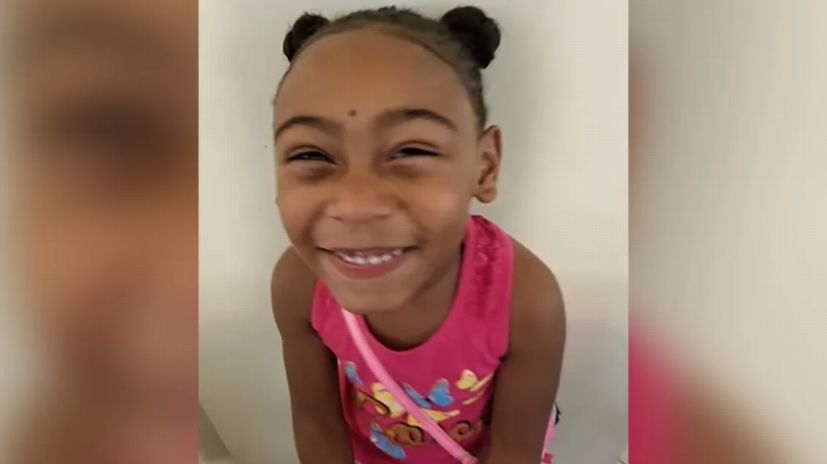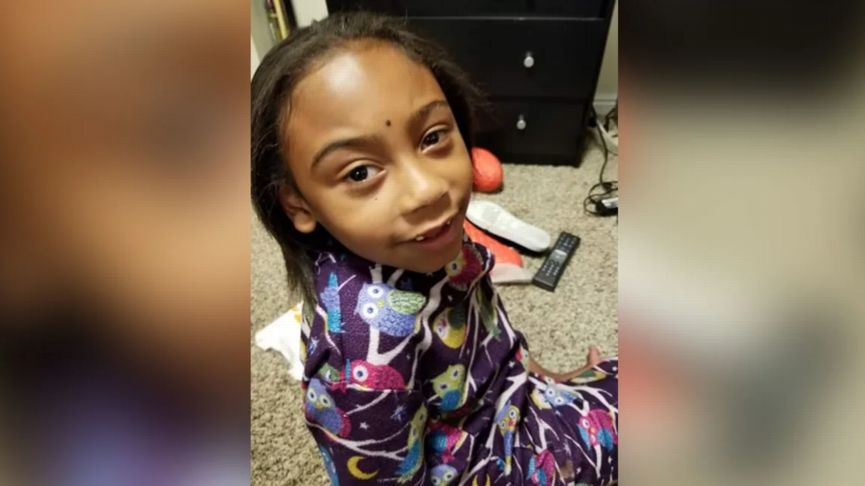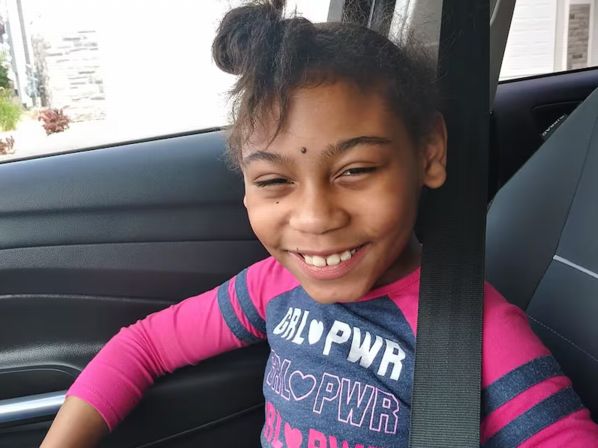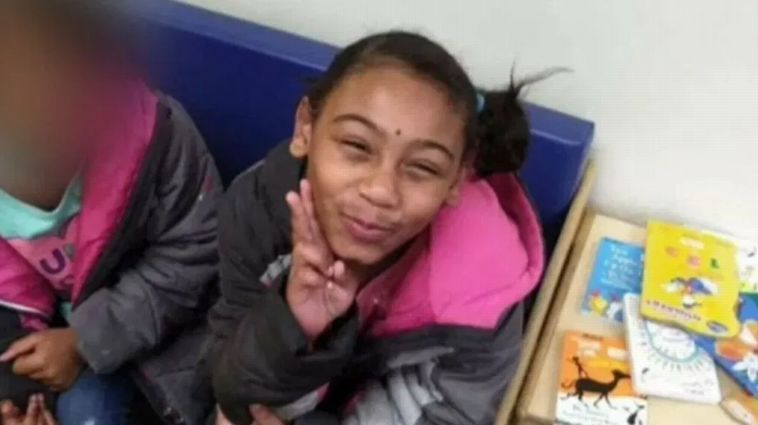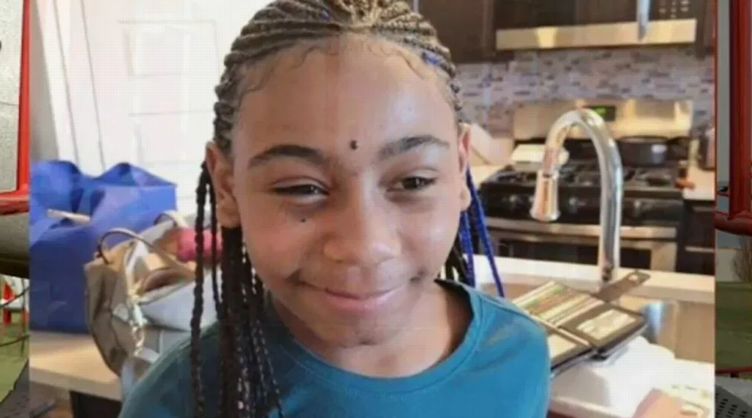The Isabella Izzy Tichenor Case and Its Impact on Anti-Bullying Policies in School
In a profoundly distressing incident that has sparked widespread debate and introspection, Isabella Izzy Tichenor, a 10-year-old student in Davis County, Utah, tragically ended her own life. Izzy, who was both Black and autistic, suffered from relentless bullying at school, a place that should have been a sanctuary of learning and growth but instead became a battleground of isolation and torment. This case underscores the devastating impacts of bullying, particularly how it intersects with race and disability, and highlights critical flaws in school system responses to such crises.
The repercussions of Izzy’s death were far-reaching, prompting a meticulous examination of the Davis School District’s handling of bullying allegations. After her passing in 2021, it came to light that despite multiple complaints, the school’s response was woefully inadequate. This neglect has now culminated in a significant legal and financial response—a $2 million settlement agreed upon by the district to compensate Izzy’s family. This settlement is not just a financial transaction; it is a public acknowledgment of the severe consequences of failing to protect a vulnerable child.
Additionally, the district reached a separate $200,000 settlement involving three other students who faced discrimination, indicating a systemic issue within the school environment. These legal actions, coupled with an earlier scathing report by the Department of Justice on the district’s historical inadequacies in handling racial and disability-related harassment, have propelled a series of reforms.
This essay will delve into the intricate details of Izzy’s story, examining the multifaceted aspects of bullying she faced, the initial response by the educational authorities, and the extensive legal and financial implications that followed. It will also explore how this tragic event has catalyzed changes within the Davis School District and potentially beyond, aiming to ensure such a failure in duty of care is not repeated.
Background on Isabella “Izzy” Tichenor
Isabella “Izzy” Tichenor, a 10-year-old student in Farmington, Utah, tragically became a symbol of the urgent need for more comprehensive anti-bullying measures and better support systems within schools, especially for children who are both racially different from their peers and living with disabilities. Izzy was Black in a predominantly white community and diagnosed with autism, a condition that can affect social skills, behavior, and the ability to communicate both verbally and non-verbally.
From a young age, Izzy exhibited the typical joys and challenges that come with autism. She had unique strengths and interests but also faced difficulties in social interactions, which are often structured very differently in school settings than in the home environment. This difference can be particularly challenging for children on the autism spectrum, who might struggle with unspoken social rules or sensory overloads that are common in busy school environments.
Izzy’s journey through the educational system was marked by her vibrant personality shadowed by the constant challenge of fitting into the social fabric of her school. As a Black autistic child, Izzy navigated more than just the usual academic expectations; she also faced the daunting task of social integration in an environment that was not always welcoming or understanding of her differences. Reports from her family suggest that Izzy often felt misunderstood and was frequently isolated from her peers, both socially and academically.
In school, Izzy’s experiences were compounded by her visible differences. Being one of the few Black students at Foxboro Elementary, she stood out, and not always in ways that fostered inclusion. Children, being keen observers yet not always understanding the complexities of race and disability, may have seen Izzy’s behavior through a lens tainted by confusion or bias. This lack of understanding and acceptance from peers inevitably played a role in the bullying she endured.
Bullying and Discrimination at School
The bullying Izzy faced was multi-faceted and persistent. According to her family, it began with subtle exclusions and escalated to more overt acts. Peers targeted her for both her racial background and her disability, areas where differences were most apparent. The bullying incidents ranged from verbal taunts to physical avoidance, as if her presence alone was undesirable. These incidents were not isolated but part of a continual pattern that wore down Izzy’s resilience and sense of safety.
Specific instances of bullying reported by Izzy’s family paint a harrowing picture of her daily school life. She was often called derogatory names, and her family recounted times when her classmates made disparaging comments about her hair and skin color. Additionally, the characteristics of her autism, such as difficulties in communication and atypical reactions to social cues, made her an easy target for ridicule and social manipulation.
Izzy’s family repeatedly reached out to the school officials to report these incidents, but the response was reportedly sluggish and inadequate. The lack of a timely and effective response likely exacerbated the situation, making Izzy feel even more helpless and unsupported.
The intersection of race and disability played a significant role in the type and intensity of bullying that Izzy experienced. Research has shown that students who are both racially diverse and disabled are at a higher risk of being bullied. Their experiences are often more severe and have a more significant impact on their mental health and academic achievements. In Izzy’s case, her identity not only made her more visible but also more vulnerable to prejudice and discrimination, both from peers and, systemically, from societal biases that could infiltrate school environments.
These complexities surrounding Izzy’s race and disability necessitate a deeper discussion and understanding within educational policies and practices. Her tragic death highlights a critical need for schools to adopt more inclusive and proactive approaches in addressing bullying and supporting students with diverse backgrounds and needs.
School District’s Initial Response
The response of Davis School District and Foxboro Elementary School to the bullying allegations made by Isabella “Izzy” Tichenor’s family was marked by significant delays and deficiencies, which ultimately drew severe criticism from both the community and legal authorities.
When Izzy’s family reported the bullying to school officials, the expected protocol should have involved immediate intervention to address and mitigate the bullying. However, the family’s reports were met with what appeared to be a lackluster response.
The initial handling of the situation by Foxboro Elementary and the Davis School District revealed a troubling lack of urgency. According to public statements and subsequent investigative findings, the school did not take swift action to investigate the allegations brought forth by Izzy’s family. This slow response is indicative of a broader systemic issue within the district, where procedural delays can exacerbate the distress experienced by victims of bullying, particularly those from vulnerable groups.
Critics argue that the school’s response was not only slow but also inadequately thorough. The lack of a timely and decisive investigation into the bullying reports meant that the underlying issues continued unchecked, potentially allowing the bullying behavior to persist and escalate. This oversight can be partly attributed to a possible underestimation of the severe impact that bullying can have on a child, especially one with disabilities and from a racial minority.
The failure to promptly investigate the bullying allegations against Izzy points to a need for systemic changes in how schools address such serious complaints. Schools must have robust mechanisms in place to immediately address allegations of bullying, ensuring that all students feel safe and supported. The delay in the school district’s response not only failed to prevent further harm to Izzy but also sent a damaging message about the seriousness with which such issues are treated.
Legal and Financial Consequences
The tragic outcome of Izzy’s situation led to significant legal and financial repercussions for the Davis School District. The district’s handling of the bullying reports and the subsequent death of Izzy resulted in a major settlement and public scrutiny.
In the wake of Izzy’s death, her family pursued legal action against the Davis School District, which culminated in a $2 million settlement. This settlement was reached as a means of compensating the family for their immense loss and suffering. It also served as a significant financial penalty for the school district, reflecting the severity of the neglect that occurred. This large sum underscored the gravity of the school’s failures and the importance of adhering to legal and ethical standards in handling bullying and discrimination.
Additionally, the district settled another case involving three students who had faced discrimination, agreeing to pay $200,000. This separate settlement highlighted ongoing issues within the school district related to handling cases of discrimination and harassment. It demonstrated a pattern of behavior that necessitated not only financial compensation but also systemic changes within the district’s policies and procedures.
The settlements were accompanied by legal stipulations that required the school district to make substantial changes to its policies and training concerning bullying and discrimination. Part of the agreement included the implementation of new training programs for staff on how to recognize and combat bullying effectively, and how to create a more inclusive and supportive school environment for all students.
Moreover, these legal outcomes prompted a broader examination of practices across the school district. The public nature of the settlements and the associated legal proceedings brought significant attention to the issues of school bullying and discrimination, influencing other school districts to reevaluate their policies and the effectiveness of their response systems.
The initial response of the Davis School District to the bullying faced by Izzy Tichenor was inadequate, highlighting a need for immediate and proactive measures to handle such serious issues. The legal and financial consequences faced by the district served as a stark reminder of the responsibilities that educational institutions have towards their students. These events have spurred discussions and changes aimed at improving the safety and inclusivity of school environments, ensuring that all children are protected and supported regardless of their background or personal challenges.
External Investigations and Findings
In the wake of Isabella “Izzy” Tichenor’s tragic death, the response from the Davis School District was scrutinized not only by the community but also through several independent and governmental investigations. These inquiries were aimed at uncovering the truth behind the school’s handling of the bullying allegations and determining whether systemic failures contributed to the unfortunate outcome.
An independent investigation was commissioned by the Davis School District to provide an objective assessment of how Izzy’s bullying allegations were handled. The findings were sobering, highlighting several critical lapses in the school’s response protocols. The investigation concluded that the bullying reports made by Izzy’s family were not addressed with the urgency or seriousness they warranted. This failure was attributed to a combination of factors, including inadequate training of school staff on handling bullying, especially when involving students with disabilities or those from racial minorities.
Moreover, the investigation found that there was a significant delay in the administrative response to the bullying reports. This delay likely exacerbated the situation, allowing the bullying to continue unchecked, which may have contributed to the deterioration of Izzy’s mental health.
Further compounding the school district’s troubles was a 2021 investigation by the Department of Justice (DOJ), which looked broadly at the Davis School District’s handling of racial and disability-related harassment. The DOJ report painted a grim picture of systemic neglect and failures that extended beyond Izzy’s case. It detailed years of harassment that Black and Asian American students had endured, with school officials frequently ignoring complaints from parents and students alike.
The DOJ concluded that the district’s failure to address these complaints was not only a violation of civil rights but also indicative of a broader cultural and procedural problem within the district that needed urgent correction. The investigation led to a settlement agreement requiring the district to overhaul its policies and improve its response to discrimination and harassment.
Impact on the Community and Policy Changes
The revelations from these investigations and the tragic loss of Izzy had a profound impact on the local and broader community, sparking a much-needed dialogue on bullying, discrimination, and the responsibilities of educational institutions.
The community response was one of heartbreak and determination. Heartbreak over the loss of a young life to circumstances that could have been prevented; determination to ensure that no other child would suffer as Izzy did. The case became a rallying point for advocates of anti-bullying campaigns and disability rights, highlighting the urgent need for schools to be safe spaces for all students, regardless of their background or abilities.
Educational forums, workshops, and seminars were organized to educate the community about the importance of inclusivity and the harmful impacts of bullying. Vigils and memorials for Izzy also provided a space for communal grieving and solidarity, strengthening community resolve to push for meaningful change.
In response to the widespread outcry and the findings of the investigations, the Davis School District implemented several critical policy changes. One of the most significant was the adoption of trauma-informed counseling practices. This approach recognizes the psychological impact of trauma on students and integrates this understanding into all levels of student support services. The aim is to not only support students who have experienced trauma but also to prevent occurrences of trauma through better management of bullying and harassment.
Additionally, the district revised its bullying reporting procedures. The new procedures emphasized timeliness and thoroughness in responding to bullying allegations. Schools within the district were required to document all incidents of bullying in detail, follow a strict timeline for responses, and ensure that all staff were trained in these new protocols.
Furthermore, the district made commitments to ongoing education and training for staff on diversity, inclusivity, and the specific needs of students with disabilities. This training was designed to foster an environment where all students feel valued and supported, reducing the likelihood of discrimination and bullying.
The tragic case of Izzy Tichenor has served as a critical wake-up call for the Davis School District and educational institutions across the nation. The external investigations into the district’s handling of bullying and harassment allegations have led to significant changes in policy and practice, aimed at creating safer, more inclusive school environments. While the grief for Izzy remains, the actions taken in the wake of her death offer hope that future students will receive the support and protection they rightfully deserve, preventing such tragedies from occurring again.
The tragic case of Isabella Izzy Tichenor, a young girl subjected to relentless bullying due to her race and autism, serves as a profound reminder of the critical vulnerabilities within our educational systems. Izzy’s story highlights the severe consequences of inadequate responses to bullying and the essential need for schools to become safe havens for all students, particularly those from minority and disabled backgrounds.
The key points of this case encompass the failure of Davis School District to address the bullying allegations timely and effectively, leading to a $2 million settlement with Izzy’s family. This legal outcome not only signifies the gravity of the district’s failures but also sets a precedent for the financial and reputational consequences educational institutions can face when they fail to protect their students.
The implications for the future are clear: there must be systemic changes across educational settings nationwide. Schools need to implement rigorous anti-bullying policies, comprehensive training for all staff on diversity and inclusivity, and effective monitoring systems to ensure these policies are enforced. Additionally, there is a profound need for schools to adopt trauma-informed approaches that recognize and address the psychological impacts of bullying.
Reflection on the broader societal changes reveals that preventing similar tragedies requires a cultural shift towards greater empathy, understanding, and acceptance of diversity. Society must value and advocate for environments where differences are celebrated rather than targeted. Education systems should lead this change, fostering communities that support all students, ensuring they are equipped not only with academic skills but also with respect and understanding for one another’s unique backgrounds and challenges.
In conclusion, Izzy’s case must serve as a catalyst for enduring change, urging all stakeholders in education and broader society to commit to creating spaces where every child can thrive without fear.
EN -How Did Aubreigh Wyatt Die The Tragic Silence and Social Media Uprising
The Heartbreaking Story of Rosalie Avila and the Urgent Call to Combat Bullying
Following in the Footsteps of a Legal Luminary – The Journey of Andrew Weissmann Son
The Life and Death of Rita Zepotha Unraveling the Mystery in “Zepotha”
Unmasking Danny from Zepotha An In-Depth Analysis of the Butcherer’s Complex Character
Alaine from Zepotha Unveiled A Deep Dive into the Protagonist Across Book and Film
Unveiling Maxine from Zepotha A Deep Dive into the Evolution and Impact of a Trailblazing Character
